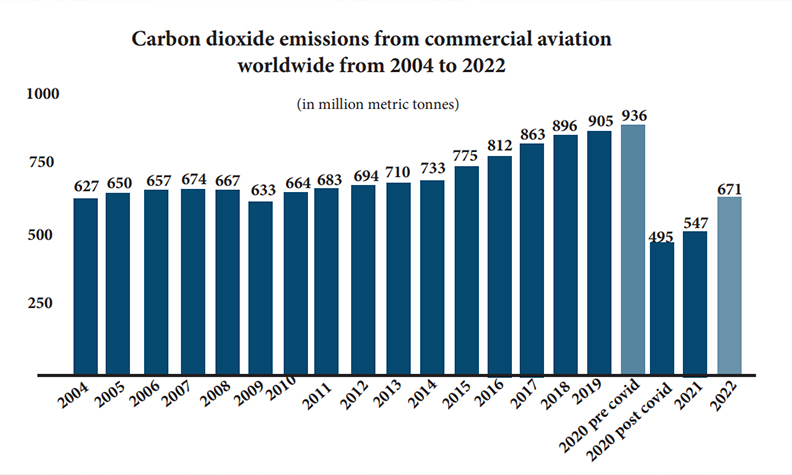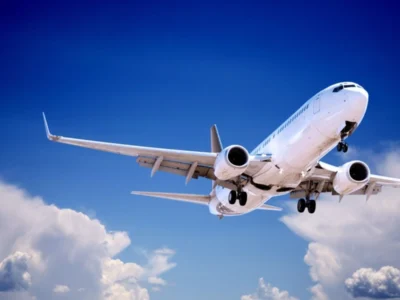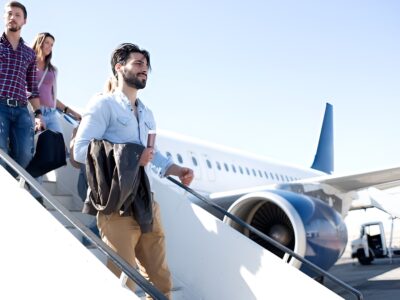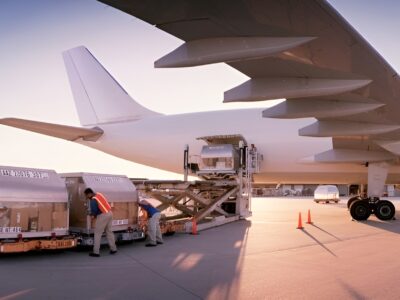
The global airline sector is more serious than ever in terms of adopting sustainability
Late in February, European aircraft maker Airbus announced plans to test hydrogen fuel technology using a modified version of one of its A380 aircraft, marking the first such test on the largest civil aircraft in service. Airbus says it has partnered with CFM International, a joint venture between GE and Safran Aircraft Engines, on the hydrogen demonstration programme and it will use an A380 ‘flying testbed fitted with liquid hydrogen tanks’ to trial propulsion technology for its future hydrogen aircraft.
Just a few days later, Swiss International Air Lines, the flag carrier of Switzerland and its parent Lufthansa Group, announced partnership with a Swiss synthetic fuel firm Synhelion, to use its solar fuel. This will make Swiss the first airline in the world to use ‘sun to-liquid’ fuel.
Synhelion has developed a technology for manufacturing sustainable aviation fuel (SAF) from renewable energy sources. It uses concentrated solar heat to manufacture syngas (synthesis gas) which can then be turned into kerosene. When combusted, the solar fuel will only produce as much carbon dioxide as went into its manufacture, helping to cut aviation emissions.
Weeks earlier, on February 4, aviation stakeholders in the European Union signed on to the “Toulouse Declaration”, the first ever public-private initiative towards net zero carbon emissions by 2050. The declaration was endorsed by 77 airport operators, controlling 250 airports across Europe. Besides the airports, many European airlines have also begun to take steps towards cutting their carbon footprint, in a welcome, albeit belated move.
With news of this kind emerging more frequently and from different parts of the world, aviation industry experts believe that the move towards sustainability in aviation has finally begun and that the industry is committed towards achieving its goals.
‘‘The global airline sector is more serious than ever in terms of adopting sustainability. It has now reached a crossroads and it must ensure it adopts measures to reduce its environmental impact, respond to travellers’ increased awareness for the environment, and contribute to governmental targets. International Air Transport Association (IATA) has constructed three pillars and four targets for environmental sustainability, which shows that the sector is taking this seriously. The targets set to improve fuel efficiency by 1.5 pc a year between 2009 and 2020, cap aviation carbon emissions from 2020 (carbon-neutral growth) and reduce net aviation emissions by 50 pc by 2050 from 2005 levels. It plans to achieve this using the four pillars which are: improving technology, introducing more efficient aircraft operations, improving infrastructure, and adopting a single market-based measure,’’ Ralph Hollister, Travel & Tourism Analyst at GlobalData, a data aggregator, tells India Outbound.
Europe takes the lead
In the race to net zero aviation, Europe seems to have stolen a march over other regions of the world. Besides the Toulouse Declaration, various associations of airlines, airports and aircraft makers have already signed on to Destination 2050, a roadmap with the goal for all European aviation businesses to reach net zero CO2 emissions by 2050. Destination 2050 was launched in 2021 by Europe’s five leading aviation associations, representing airlines, airports, aerospace manufacturers and air navigation service providers.
This is part of the initiative by the global governmental aviation body, the International Civil Aviation Organisation (ICAO) towards the adoption of an ambitious ‘long-term aspirational goal’ (LTAG) for aviation. This goal is likely to be adopted during ICAO’s 41st Assembly in September this year.
ICAO says that while it is not a regulator of the airline and is more a forum for cooperation between aviation regulators from the world over, it is pushing the global aviation community towards a net zero world. “In the area of environmental sustainability, our role is to help states identify and agree on global strategies for reducing the environmental impact of their aviation sectors. Agreements reached through ICAO include a globally binding strategy in support of climate neutral growth for the aviation sector, known as CORSIA, which will require carbon offsetting by airlines. Other key agreements support the implementation of sustainable aviation fuels, operational improvements, and innovation,’’ William Ralliant-Clark, communications officer of the ICAO tells India Outbound.
The ICAO says that though the Covid-19 pandemic crippled the aviation industry, its move towards sustainability, despite the incremental cost of such adoption, has not stopped. “Despite the extreme impacts of the global pandemic on the global airline sector, implementation is on track. Airlines are among the operators that cooperate with ICAO in the environmental protection area, by contributing technical expertise through the International Air Transport Association,’’ adds Raillant-Clark.
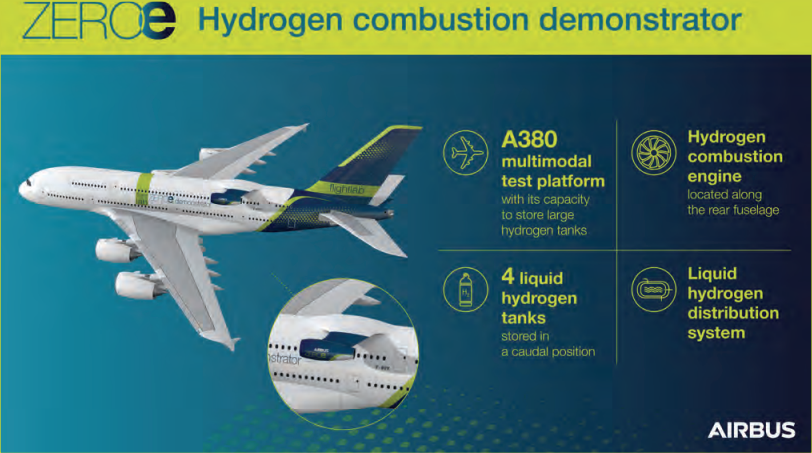
EU has made it mandatory for jet fuel suppliers to blend growing share of SAFs, including biofuels and e-kerosene, in the fuel supplied in European airports
COP26 effect
The aviation industry, at least in Europe, seems to have begun moving towards sustainability in a coordinated and serious manner since the Climate Change Summit, COP-26, in Glasgow last November where most research reports and scientists once again sounded the alarm bells, saying that in many cases it may already be too late to keep the rise in global temperatures to below 2°C or even 3°C from the pre-industrial era.
At the meeting, and in some cases in the months leading up to the Glasgow meet organised by the United Nations Framework Convention on Climate Change (UNFCCC) the global body struggling to lead negotiations on dealing with climate change, the global aviation industry began setting goals for themselves to cut their emissions and aim for net zero carbon footprint by the year 2050.
The Toulouse Declaration is part of this movement. Since then, a number of European carriers, notably Lufthansa, Air France & KLM have announced several measures, including launching compensation efforts for carbon emissions or begin to use sustainable aviation fuel, which cuts down the carbon emitted during flight as aviation fuel accounts for close to 90 pc of emissions by the industry.
The EU has made it mandatory for jet fuel suppliers to blend growing share of SAFs, including biofuels and e-kerosene, in the fuel supplied in European airports. By 2025, at least 2 pc of all jet fuel will be SAF growing to 5 pc within five years after that and further increase over the years in percentage of SAFs in all jet fuels.
Of these, analysts say e-kerosene is the best option as it is the only fuel type that can be scaled up for widespread use and meet the demand of the aviation sector. Encouragingly, the European aviation stakeholders want the EU to significantly enhance the share of e-kerosene in the fuel mix, taking that up from 0.7 pc by 2030, while reducing the advanced biofuel target from 4.3. It wants e-kerosene to make for 5 pc of total aviation fuel by 2035.
Aviation was a growing source of EU greenhouse gases before the pandemic, accounting for 4 pc of total European emissions. By using SAF and other methods, it hopes to cut these emissions dramatically in the next three decades. “Europe urgently needs to provide investment security for the most sustainable aviation fuels, while avoiding the risk of lock-in to those fuels that have no place in our zero-emissions future,” says Pete Harrison, executive director for EU policy at the European Climate Foundation. “By joining forces, our diverse group has been able to craft future-proof guidance,’’ he adds.
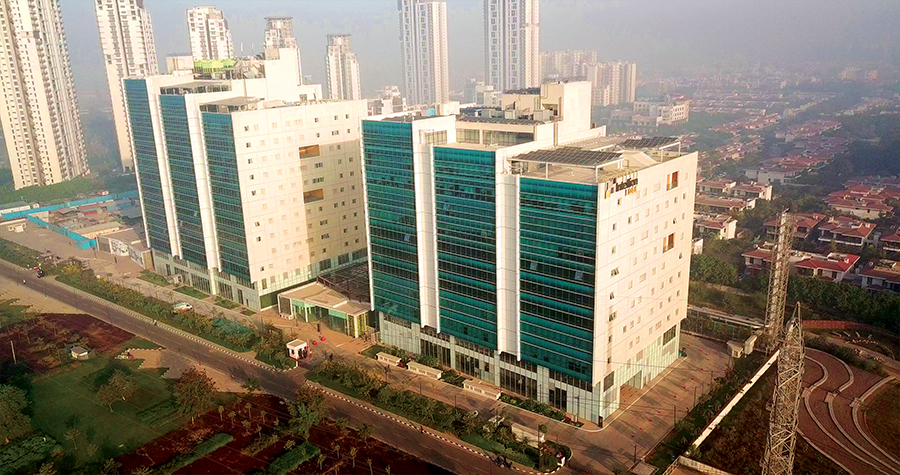
Vistara has moved its main office to a green building to cut carbon foot print
Zero emission flights
Currently, various aircraft makers as well as startups are busy experimenting with various kinds of propulsion systems to bring zero carbon emission airplanes to life, not just for experimental use or even small aircraft, but also for large workhorses. These workhorses account for more than 98 pc of all flights.
Of these, two seem to be at the most advanced stage of development – electric or battery-powered airplanes as well as planes flying on hydrogen fuel. Of the two, one has already come into existence, though on a small scale. A number of companies have developed prototypes of small airplanes entirely run with battery power. Most of these projects are targetting entry in service up to 2030, though some aircraft are already commercially available. Four projects had their first flights in 2019 namelyLilium, City Airbus, Boeing Aurora eVTOL, and Bye Aerospace Sun Flyer 2.
‘‘Significant progress has been made on the Vertical Take Off and Landing (VTOL) category over the recent years, with seat capacities from one to five, with takeoff weights between 450 and 2200 kg and projected flight ranges from 16 to 300 km. These aircraft projects are only electric powered and aim to entry into service in the period of 2020-2025. The large commercial aircraft category includes initiatives focused on hybrid-electric, single-aisle aircraft with seat capacities of 100-135 and targeted entry into service after 2030,’’ says Raillant-Clark of ICAO.
Despite these encouraging developments, battery-powered planes have several limitations currently, notably the load in terms of number of passengers or cargo and the range that these planes can fly on a single charge of battery. This is because the energy density of batteries currently is far from what is needed to develop a viable, large or even mid-sized aircraft.
‘‘Jet fuel is incredibly energy dense, it roughly has an energy density of 12,000Wh/kg, the latest Tesla battery has an energy density of 207Wh/kg. Meaning that if you where to replace the jet fuel in a modern airliner the size of the battery would be 5697 pc larger than the current size of the their fuel tank. Aircraft manufacturers are making efforts to overcome this hurdle and the technology is still in its infancy. The amount of research going into improving battery capacity is at its highest ever and in the early days of flight, the idea of having a jet engine were but a dream. Therefore it is not to say will batteries replace traditional fuels, it is a matter of when. But that when is not to be for a long time,’’ Daniel Morris, Lead Aerospace and Defence Analyst at GlobalData, tells India Outbound.
The other technology for sustainable aviation is hydrogen-fuelled airplane. In this, too, Europe has made some progress. Airbus has already begun several experiments to retrofit its current planes with hydrogen-propelled systems. Airbus, the European manufacturer that competes with American Boeing as the world’s largest passenger aircraft maker, has chosen hydrogen as its clean aircraft power source of the future. It has decided to open two innovation centres, one each in France and Germany, by next year to accelerate the development of hydrogen propulsion technology.
Airbus is currently retrofitting an Airbus 380, world’s largest commercial airplane, with hydrogen storage and distribution. The aim of the experiment is to learn more about hydrogen propulsion systems in real ground and flight conditions. Airbus hopes that test flights with hydrogen-powered A380 would take place in 2026. Airbus says that by leveraging the expertise of American and European engine manufacturers to make progress on hydrogen combustion technology, the aviation industry shows that it is committed to making zero-emission flight a reality.
Besides Airbus, there are other players testing hydrogen as fuel of tomorrow for aviation. A recent study by International Council for Clean Transportation confirmed hydrogen’s viability for short-haul aviation. It assessed two liquid hydrogen combustion designs, one for a smaller turboprop aircraft for regional transportation like the ATR72 and a narrowbody turbofan for short and medium haul airplane like A320neo. The study says that both the planes would need to be redesigned with elongated fuselage to accommodate storage for hydrogen behind passenger cabin. The study confirmed that compared to fossil fuel, this aircraft would be heavier and less efficient and would have shorter range than the fossil fuel.
But scientists remain confident that a hydrogen-powered narrow-bodied airplane can carry up to 165 passengers to 3400 km and a turboprop airplane can carry 70 passengers to 1400 km range. They estimate that the two types of airplanes could take up to 38 pc of all aviation passenger traffic worldwide.
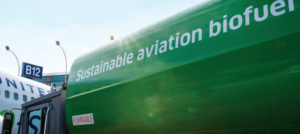
In December 2021, the American airline, United, became the largest airline to invest in zero-emission, hydrogenelectric engines for regional aircraft
Airlines get into the act as well
Beyond regulators, associations and aircraft manufacturers, several airlines have also moved to adopting sustainability as their core focus area going forward. While Airbus and others were testing hydrogen fuel as an option, in December 2021, the American airline, United, became the largest airline to invest in zero-emission, hydrogenelectric engines for regional aircraft.
United Airlines acquired a stake in hydrogen-electric aircraft engine maker, ZeroAvia that could lead to the airline adding dozens of zero-emission, 100 pc hydrogen-fuelled airplanes within the next six years. The airline said that its investment was part of its goal to cut all greenhouse gas emissions by the year 2050. Zero Avia is currently developing a 19-seater aircraft that will operate commercial hydrogen-electric flights between London and Rotterdam from 2024. United Airlines also took the lead of sorts by running a flight on 100 pc SAF last year.
Similarly, UK’s national carrier, British Airways has also decided to invest in sustainable aviation fuel technology provider and producer LanzaJet as it expands its operations. The parent organisation of BA, IAG, says SAF would account for 10 pc of all its aviation fuel consumption by the year 2030.
Back home here in India too, airlines are moving towards cutting their carbon footprint. One such example is Vistara Airlines of the Tata Group. “At Vistara, we aim to achieve carbon neutrality by reducing emissions through operational efficiencies. Our USP is our young fleet of aircraft with fuel efficient engines. Our current fleet of A320 NEO, A321 NEO & B787-9 aircraft are powered by the most advanced technologies and systems, that result in reduction in engine noise as well as nitrogen oxide and carbon dioxide emissions. Using new generation aircraft contributes significantly to keeping carbon levels low and helps achieve better fuel efficiency which is a step forward towards sustainability,’’ spokesperson of Vistara tells India Outbound.
‘‘We are also investing in various emerging green technologies. For instance, we are digitalising several processes with the objective to bring down our carbon footprint by reducing the use of paper. Green Operating Procedures, weight reduction measures and regular aircraft exterior cleaning have also helped in reducing the amount of fuel burn. We have also cut down on Auxiliary Power Unit (APU) usage at airports, providing ground equipment alternatives that has helped in the reduction of carbon emissions per aircraft per turnaround. We also use E-Tugs or Electric Power Tuggers for day-to-day maintenance task logistics runs to minimise emissions across several other operations,’’ adds the spokesperson.
Vistara has also replaced conventional lavatories with smart-lavatories in all A320/ A321 aircraft leading to weight reduction of 150 kg per aircraft that helps in reduction of around 100 kg of carbon emissions per aircraft per hour of flying. The airline says it has also recently moved its main office to a green office building to cut total carbon footprint. The airline is also replacing plastic cutlery in economy class with environment-friendly, biodegradable alternatives.
Many other airlines have also taken positive steps to introduce sustainability into their operations, and often in different ways. For instance, Dutch carrier KLM promotes alternative transportation methods including rail travel instead of their own air services to limit the impact their operations have on the environment.
Footing the bill
The move to green aviation is, however, an expensive proposition. For an industry still reeling under record losses due to the Covid-19 shutdowns, it is not easy to invest tens of billions of dollars in adoption of sustainability. Hence, many airlines have initiated moves that pass the cost of the sustainability to the passengers like asking passengers to pay for carbon offsetting initiatives or a surcharge for SAF.
Hollister of GlobalData says a bit of both is visible, with some airlines passing the cost to the passengers, while others bearing the additional cost themselves. ‘‘This remains to be seen as we are not in this situation yet. When looking at carbon offsetting, it is often the passenger which foots the bill as they normally have the option to pay extra to offset. It would be fair to say that increases in operational costs, such as by going green, usually means that customers will have to pay more as a result. This may be less of an issue for full-service carriers, but could certainly disrupt the low cost model if they are pressured in to going green, as they obviously need to stay low cost,’’ says Hollister.
“On the other hand, low-cost airline easyJet offsets its flight emissions without a passenger needing to fund it themselves. Built into the ticket price, not as a standalone charge, the airline uses a proportion of the fare to offset its flight emissions. Additionally, Delta Air Lines committed USD 1 billion to become carbon neutral by 2030, which also shows how seriously the sector is taking it on an individual basis,’’ he adds.
But for airlines adopting SAF is a daunting proposition. “The availability, supply and cost of Sustainable Aviation Fuel (SAF) is critical to adoption. Currently the cost of SAF is 5 to 6 times higher than the cost of fossil fuels, which we believe will reduce in due course with more research and development in this space. Also, operational quantities required are huge and is dependent on availability of raw material and technology to produce and supply SAF for use by commercial aviation. Currently, availability of raw material and production capacity are limited,’’ says Vistara spokesperson.
This has led the ICAO to call for the governments to chip in. ‘‘ICAO is encouraging states and operators to undertake the investments needed to ensure the sustainability and resilience of the global aviation network, building back better as we recover from the impacts of the pandemic. This means not just realising the technical and operational innovations needed to reduce the environmental impact, but also ensuring that regulators and operators are adequately resourced to ensure the safety, security, and environmental sustainability of flights,’’ says ICAO’s Raillant-Clark.








